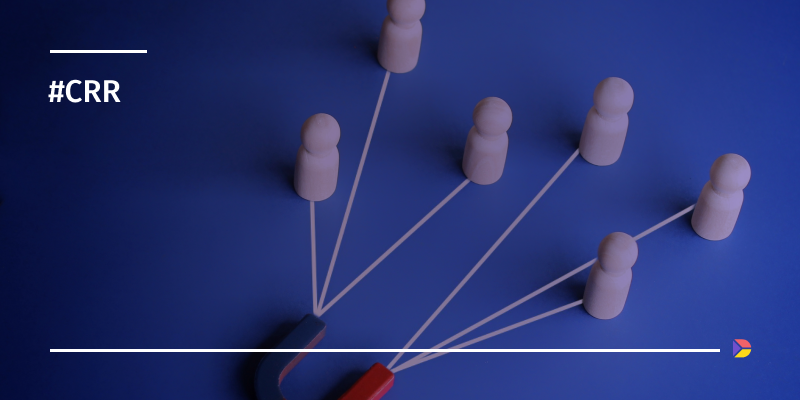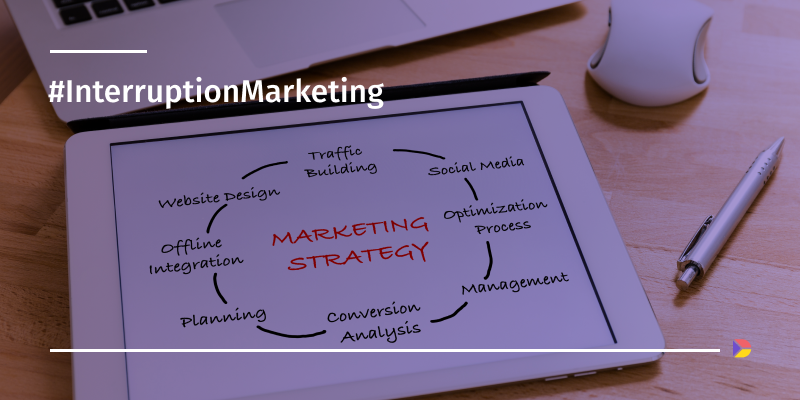Ready to improve your marketing ROI?
Fast registration. User-friendly interface. Robust integrations.
Disclaimer: Customer retention rate demonstrates if your brand is still attractive for those who have already interacted with it. A warm audience is easier to deal with.
Keeping existing customers and selling to those already engaged with your business is usually easier and cheaper than trying to attract new ones. A high customer retention rate means your clients are loyal to your business. They are ready to buy from you and are happy to spread the word about your products and services. In this post, we will concentrate on what exactly CRR stands for, why it is important to keep an eye on this metric regularly, and provide you with a couple of ideas on how to improve this indicator.
What is a customer retention rate?
The customer retention rate (CRR) is the percentage of customers who remain loyal to your firm after a particular amount of time. Being aware of the CRR delivers vital insights to firms. First, the CRR metric highlights the positive sides of the product or service that make clients stick with the given business. Second, retention means reputation. If your customers return to you and do not switch to competitors, it speaks volumes about the quality of your product. Besides, happy customers will bring you their friends and peers, so you will save on marketing budgets. Third, the more customers decide to stay with you, the easier it will be for you to plan the budget, think about further investments, and make important financial decisions.
How to calculate the customer retention rate?
To find out your CRR, you should first determine the time period that you wish to evaluate. Generally, companies can measure yearly, quarterly, monthly, or weekly CRR. Sometimes businesses may be interested in the daily CRR metric. The following figures are required to compute the CRR:
- A is the number of clients at the beginning of a given time period.
- B is the number of clients at the end of a given time period.
- C is the number of new clients that appeared within a given time period.

- Subtract the number of new clients within the time period from the number of clients at the end of the time period. You will receive the number of clients who stayed with you during the period.
- Divide the number of loyal clients by the number of clients at the beginning of the time period.
- Multiply the result by 100.
Example: assume you had 100 clients at the start of the month. You ended the month with 110 clients, and 30 clients appeared during that month. Therefore, your CRR will be:
(110 - 30) / 100 * 100% = 80%
What is a good customer retention rate?
The life of a marketing manager would be much easier if there were an ideal CRR, serving as a benchmark for further development and strategy. However, CRR depends on many factors. The first and foremost consideration is the type of business you are running. If you offer financial or accounting services and you are doing your job well, your customers will keep coming back every year. Dental offices and hairdressers are also likely to have high CRRs. Retail businesses and e-commerce companies cannot boast high retention rates. The same can be said for real estate or car manufacturing.
For most industries, the CRR metric is between 55 and 85%. Media and professional services rank around 84%, while businesses in the domains of travel, hospitality, and restaurants will show only 55%.
If you calculate the CRR for the first time in five years, it is unlikely to reveal much. To grab some insights, you should have the CRR figures for several months or years. In this case, you will be able to compare the results and draw some conclusions regarding why your clients were more loyal to you some time ago. You will trace the tendencies and highlight the gaps that have to be addressed.
Why is customer retention important?
Your customer retention rate indicates several important factors for your business:
- It demonstrates what is good and appealing to the audience about your product or service.
- If you track the CRR on a regular basis, you can see how the market's interest fluctuates.
- It facilitates future planning of the business strategy.
- It boosts organic traffic and increases ROI.
Retention rate vs. churn rate
The customer churn rate is the inverse of the CRR. It displays the percentage of customers who canceled their subscriptions, switched to competitors, or ceased ordering your product. Therefore, if your CRR is 85%, the churn rate is 15%. So the lower the churn rate is, the better it is for the company.
To calculate the churn rate, you need to divide the number of churned customers for a particular time period by the total number of customers at the beginning of that period and multiply the result by 100%.

Example: if you had 100 clients at the beginning of the month, but 20 ended their subscription, your churn rate would be the following: 20/100*100%=20%
The churn rate can be quite tricky, as you should always be aware of the reasons for terminating the subscription. Probably, your clients are not happy with some aspect of the product. The other situation is that they have opted for a more advanced plan. The second case is preferable for any business. That is why conducting customer surveys and offering them various incentives for providing feedback is very informative and can shed light on common trends. Communicate with your clients, and you will know how to grow your business and stand out.
Best tips to improve customer retention rate
Watch out for churn signals
Study various metrics to analyze the business’s performance regularly. The CRR and churn rate should be measured and analyzed to better understand what your clients think about your product. Different methods should be used to evaluate the effectiveness of your advertising campaigns, sales and marketing departments, and functionality. By analyzing current business trends, you will get a clear picture of where to go next and which goals to set.
Find an approach for each customer segment
Use various ways to access your target audience. Social media is a must for an online presence. A well-developed and carefully tested landing page should contain clear data and visible CTA buttons. Some of your customers may prefer email communication, so design informative newsletters and send timely notifications. A thorough list of contact details must be kept in the CRM system to make interactions fast and convenient. Be responsive. If you have dozens of unhandled tickets to the technical team, it's no surprise that your CRR continues to fall.
Engage customers
Do not lose communication with your customers. Remind them about upcoming payments, keep them up to date on existing bonuses or referral schemes. Stay connected, but avoid being pushy. Ask your customers if they would like to receive messages and other notifications and in what situations. Provide a tailored approach that makes each consumer feel special.
Create customer loyalty programs
This tool is effectively used by airlines, hotels, restaurants, and other retailers. Make your clients want to return. Offer them discounts and bonuses. Entertaining interaction usually works well. Amuse your clients, and they will remain loyal to your firm.
Ask for feedback and act on this information
Ask your target audience to share their feedback with you. It may be a short customer survey, a complete interview regarding their experience with your product, or simply a ranking of a phone call. Offer your customers any motivating bonuses for participating in those activities. Launching a product is just the beginning. The most challenging thing is to keep afloat, increase the retention rate, and improve conversions. You will cope with that only if you listen to your clients.
Set realistic expectations for your client
Always be honest with your customers. Find out what they expect from you and what kind of “pains” they wish to cover with your product or service. Maintain clarity about what you can do. Don't promise more than you can deliver. Analyze your audience’s requirements and assess them with your team; determine how doable those features are in the short or long term.
Use email marketing
Send letters to your customers and check if they open them. 23% of recipients who failed to open a letter in a month will churn in the next three months. Try to find out the reasons why your addresses do not open emails. There might be a technical issue behind it. You might convince your customers to use a different product or service via some other form of communication.
Don't just sell, educate as well
To keep your audience close to you, provide them with useful content. If they have already bought something from you, they may not have an urgent need to obtain another product. However, if you offer quality content, your audience will not turn away. Post informative articles, video tutorials, and entertaining content to keep your clients interested and connected. Then, they are likely to buy your next product and recommend your company as a reliable provider.
Keep all your promises and give useful advice
If you promise a discount, keep your word. If you promise to release a new version of the product, do not postpone it. It is easy to lose customers’ credibility. Train your staff and make sure all agents and team members are competent enough to assist clients. Lack of expertise may sometimes turn clients away. Evaluate your team’s performance regularly and arrange soft skills training if necessary.
Treat your ideal clients to VIP status
Every client likes to be appreciated. Treat them right, and they will bring more customers to you. It is difficult to create a reputation. Once you have it, maintain it, and it will eventually pay off.
Final thoughts
Monitor your customer retention rate regularly to remain competitive and attractive to your audience.
If you would like to read more about some particular topic, feel free to contact us. We will gladly supply you with helpful information.
Ready to improve your marketing ROI?
Fast registration. User-friendly interface. Robust integrations.




